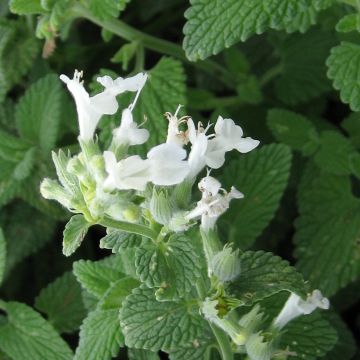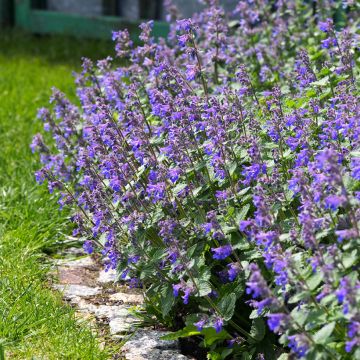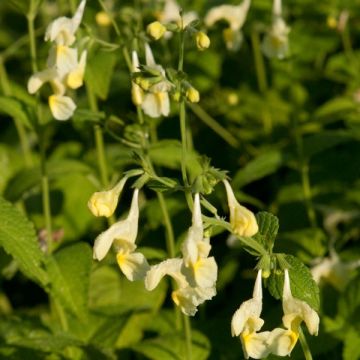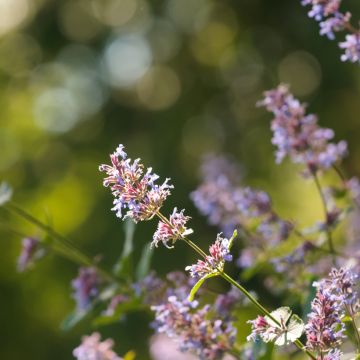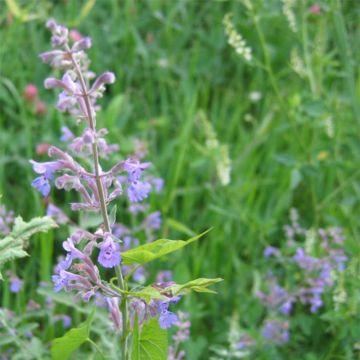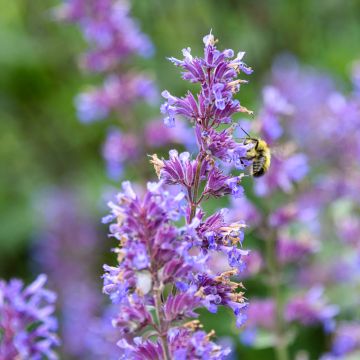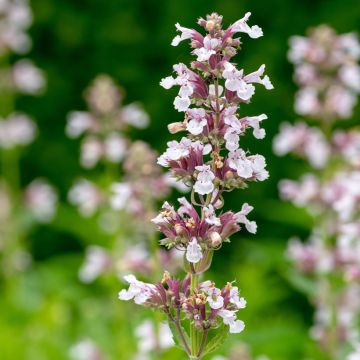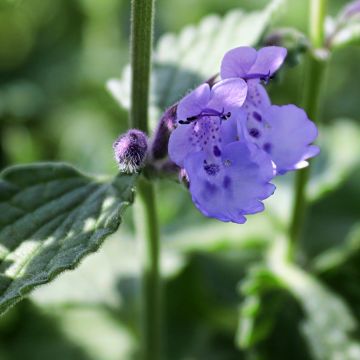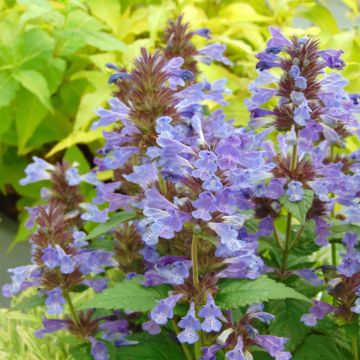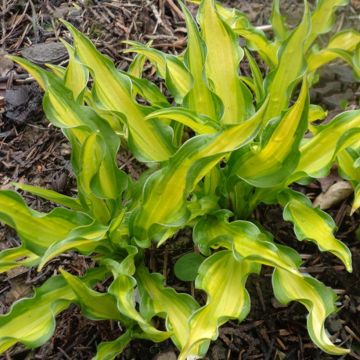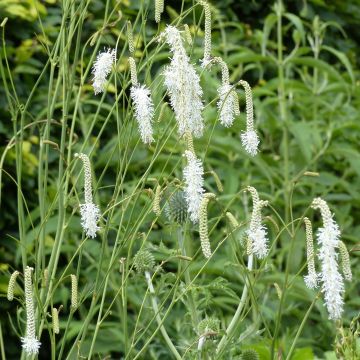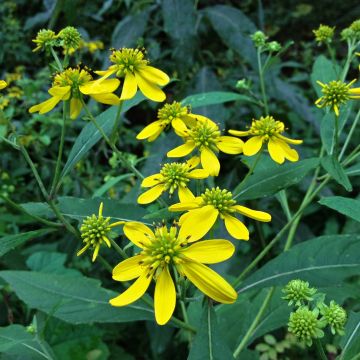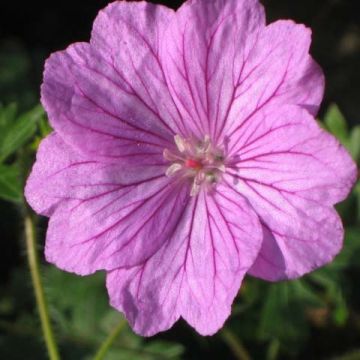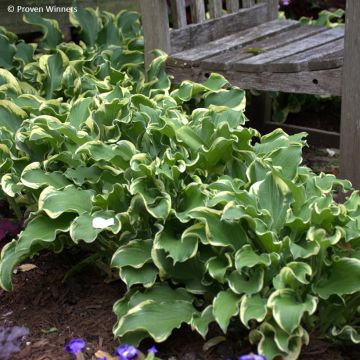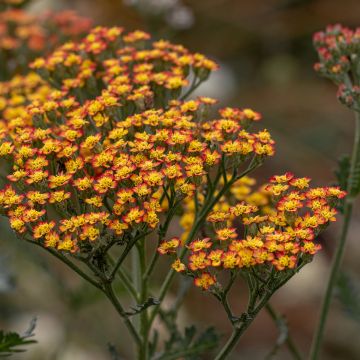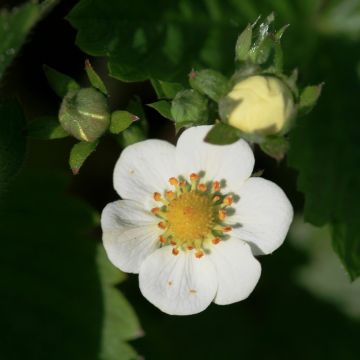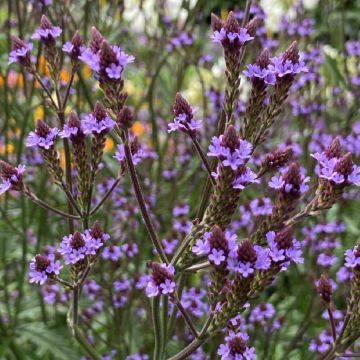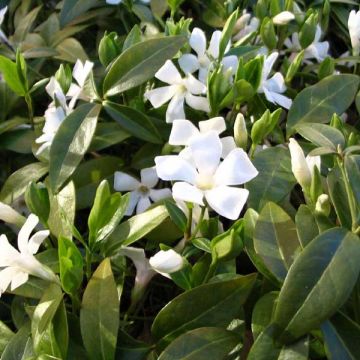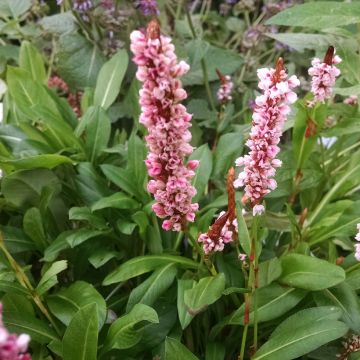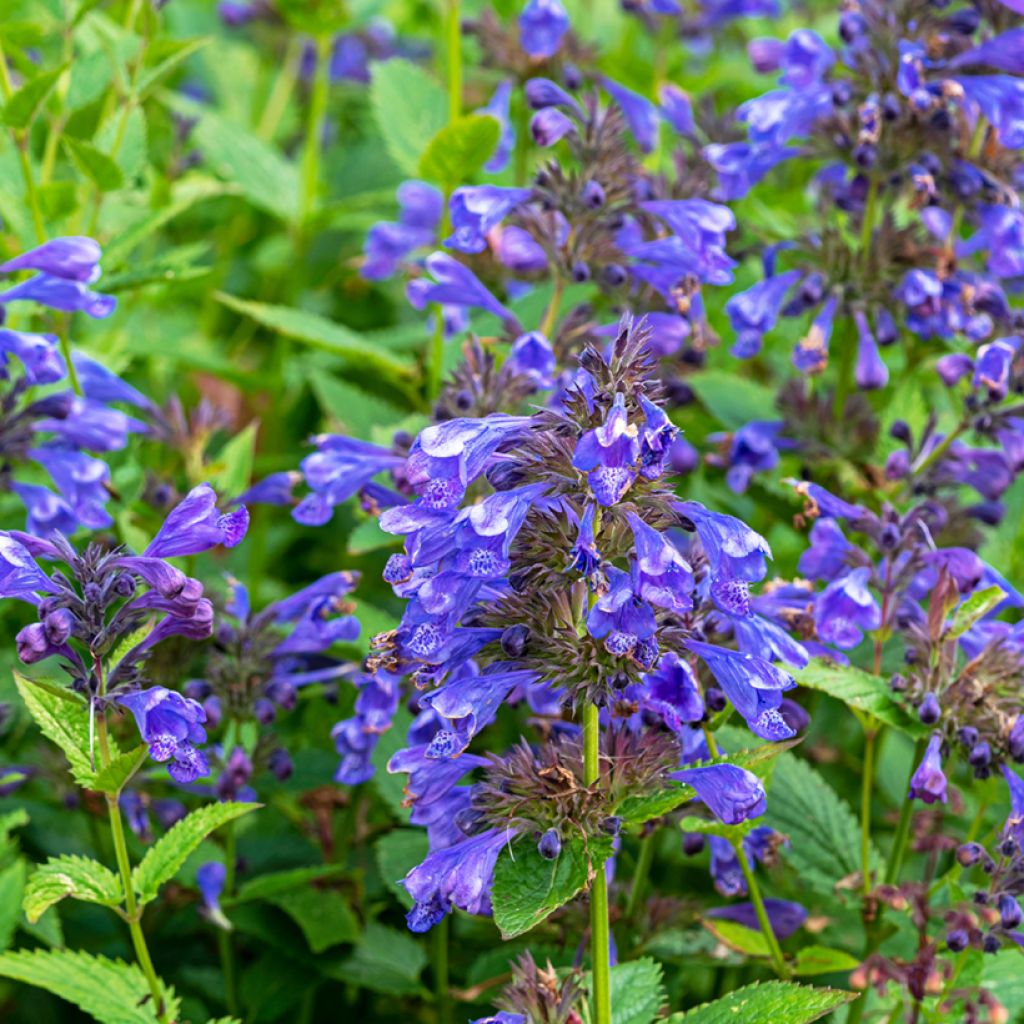

Nepeta Blue Dragon
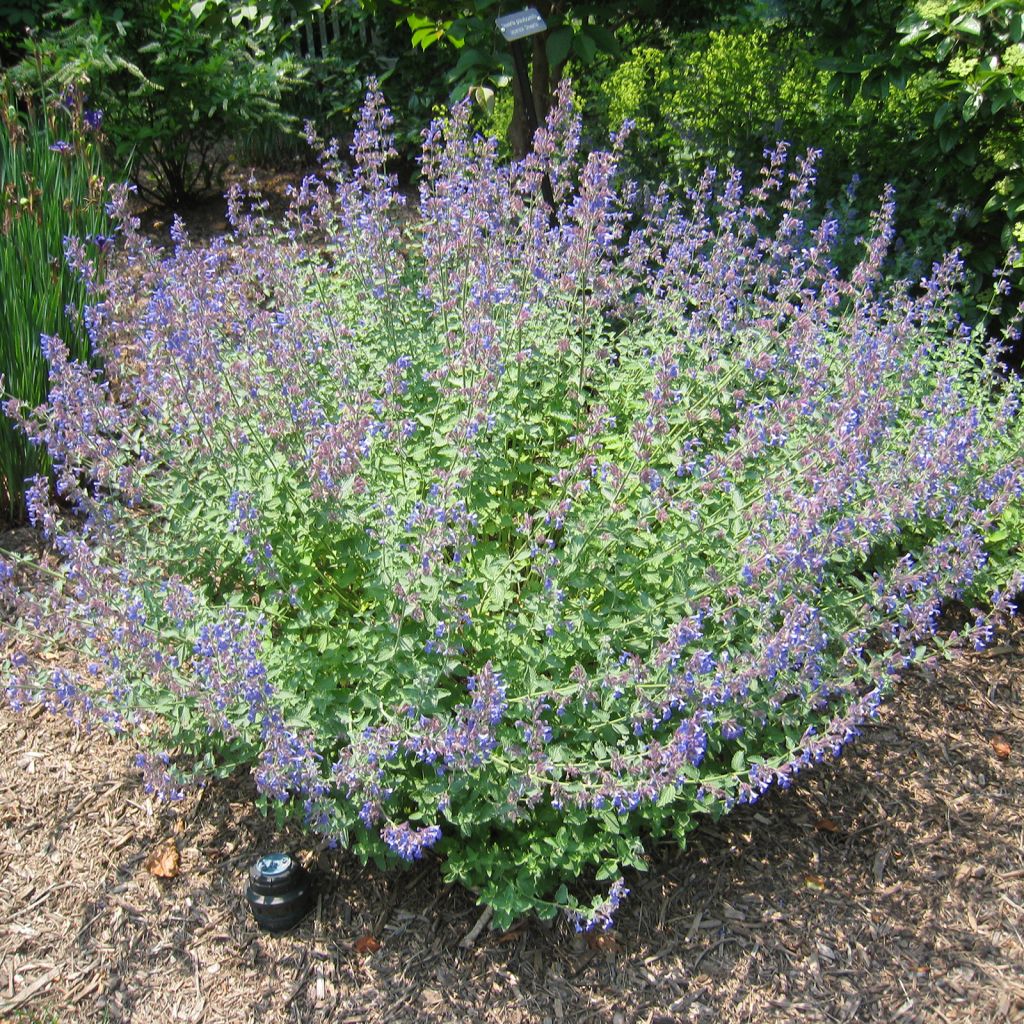

Nepeta Blue Dragon
Nepeta Blue Dragon
Nepeta Blue Dragon
Catnip, Catmint
This item cannot be shipped to the selected country
Delivery charge from €5.90
More information
Schedule delivery date,
and select date in basket
This plant carries a 12 months recovery warranty
More information
We guarantee the quality of our plants for a full growing cycle, and will replace at our expense any plant that fails to recover under normal climatic and planting conditions.
From €5.90 for pickup delivery and €6.90 for home delivery
Express home delivery from €8.90.
Does this plant fit my garden?
Set up your Plantfit profile →
Description
Nepeta Blue Dragon, a remarkable vigorous bushy perennial, highly attractive for its grey-green scented foliage and long, abundant, and airy summer flowering of spikes of large dark blue-purple flowers. An essential variety, ideally suited for many garden styles, to be planted in full sun or partial shade, in ordinary, well-drained soil.
Nepetas are, also known as Catmints, Catnips and Cat's Grass, belong to the Lamiaceae family and are found throughout the Northern Hemisphere. Blue Dragon is a hybrid of several species and a very vigorous herbaceous perennial plant with upright stems, forming a dense cushion, about 60 cm (24in) wide. Its deciduous aromatic foliage is composed of small pointed, toothed, greenish-grey leaves. From June to September a mass of erect stems rise 70 cm (28in) high, bearing spikes of large tubular, bright violet-blue flowers punctuated with powder blue and white, with a darker throat. When observed closely, the flowers resemble dragon heads, hence its name. Very floriferous and attractive to pollinators.
Nepetas are attractive to cats, who like the scent of the foliage and like to rub against them.
Nepetas are very easy and carefree perennials, robust and fast-growing, essential in the garden for their lovely ground-covering cushion shape, fine aromatic foliage, and relentless summer flowering. This Blue Dragon cultivar should be planted in full sun or partial shade, in ordinary to moist, well-drained soil. It will have a beautiful effect when planted at the base of a shrub or climbing rose and summer-flowering clematis. It will also enhance a flowerbed, a perennial border, a slope, or the back of a rockery. It will complement Daylilies, Phlox paniculata, Purple Coneflowers, Oriental Poppies, Japanese Anemones, Masterworts, and Scabious. It is also well-suited for borders and along pathways or walkways. It can be planted in containers on a terrace or balcony. Moreover, its beautiful flower spikes can be cut to create beautiful country-style bouquets, mixed with other summer flowers.
Report an error about the product description
Nepeta Blue Dragon in pictures
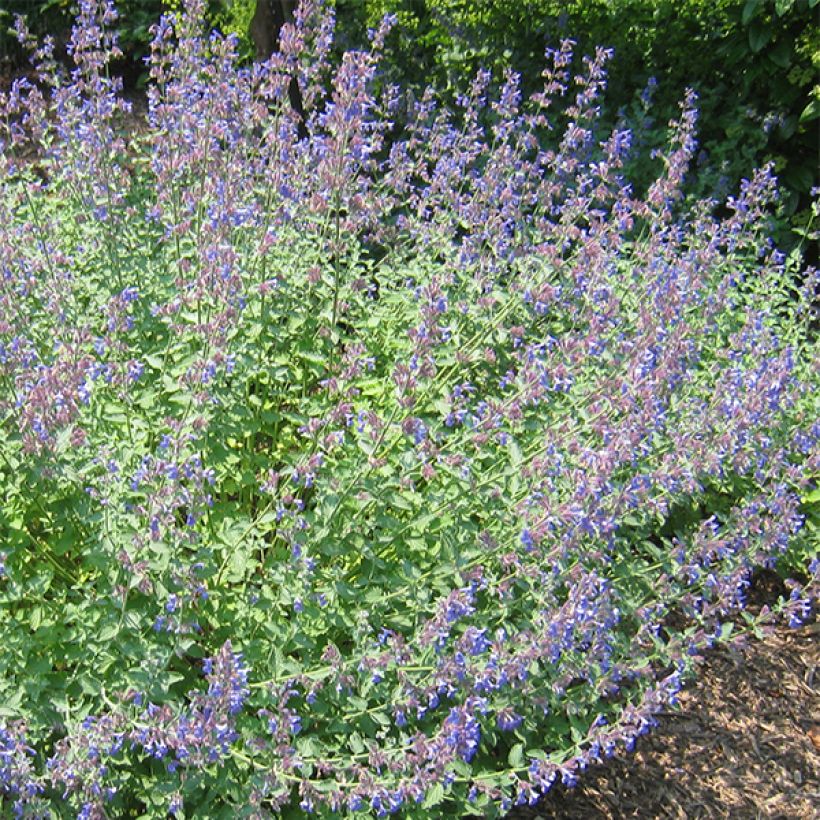

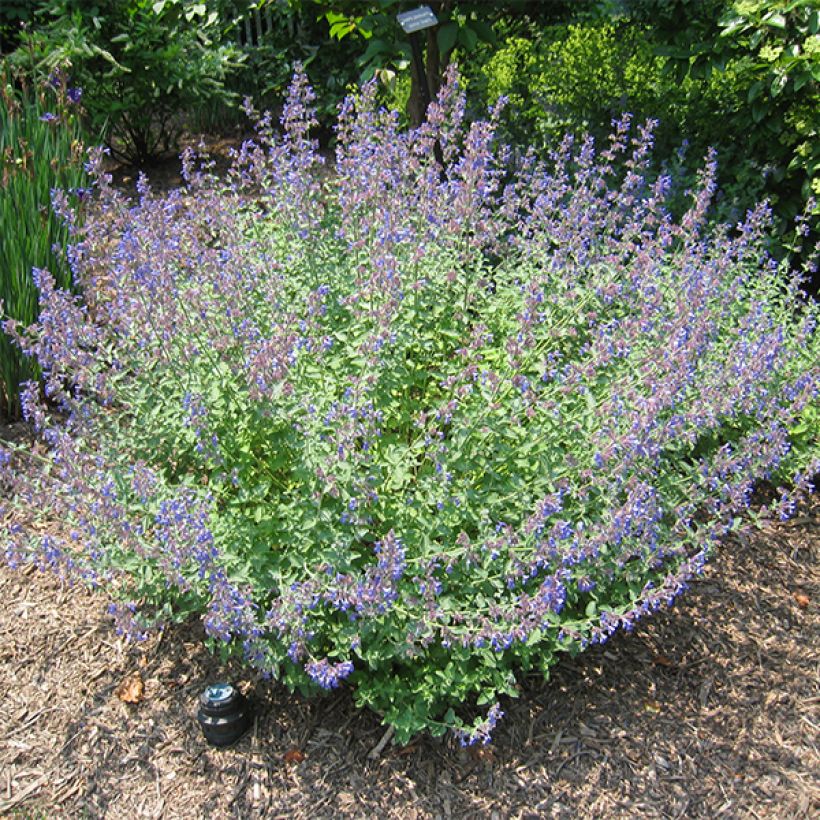

Flowering
Foliage
Plant habit
Botanical data
Nepeta
Blue Dragon
Lamiacées
Catnip, Catmint
Cultivar or hybrid
Other Nepeta - Catnip
Planting and care
Blue Dragon Nepeta is a vigorous perennial, very easy to grow and hardy down to -15°C (5°F) at least. It thrives in a sunny or lightly shaded position, in ordinary soil, preferably moist to wet, and well-drained, especially in winter. Planting can be done in autumn but it is better in spring so that the roots are developed before winter. Let the clump dry out throughout the winter to protect the crown. Cut back in early spring, before growth starts. Regularly remove faded stems to promote continuous flower production. You can divide clumps in spring and autumn when they become too large. Nepetas are very tolerant of urban pollution and disease-resistant but young shoots are sometimes attacked by slugs, and its foliage may suffer from powdery mildew during dry summers.
Planting period
Intended location
Care
This item has not been reviewed yet - be the first to leave a review about it.
Summer flowering perennials
Haven't found what you were looking for?
Hardiness is the lowest winter temperature a plant can endure without suffering serious damage or even dying. However, hardiness is affected by location (a sheltered area, such as a patio), protection (winter cover) and soil type (hardiness is improved by well-drained soil).

Photo Sharing Terms & Conditions
In order to encourage gardeners to interact and share their experiences, Promesse de fleurs offers various media enabling content to be uploaded onto its Site - in particular via the ‘Photo sharing’ module.
The User agrees to refrain from:
- Posting any content that is illegal, prejudicial, insulting, racist, inciteful to hatred, revisionist, contrary to public decency, that infringes on privacy or on the privacy rights of third parties, in particular the publicity rights of persons and goods, intellectual property rights, or the right to privacy.
- Submitting content on behalf of a third party;
- Impersonate the identity of a third party and/or publish any personal information about a third party;
In general, the User undertakes to refrain from any unethical behaviour.
All Content (in particular text, comments, files, images, photos, videos, creative works, etc.), which may be subject to property or intellectual property rights, image or other private rights, shall remain the property of the User, subject to the limited rights granted by the terms of the licence granted by Promesse de fleurs as stated below. Users are at liberty to publish or not to publish such Content on the Site, notably via the ‘Photo Sharing’ facility, and accept that this Content shall be made public and freely accessible, notably on the Internet.
Users further acknowledge, undertake to have ,and guarantee that they hold all necessary rights and permissions to publish such material on the Site, in particular with regard to the legislation in force pertaining to any privacy, property, intellectual property, image, or contractual rights, or rights of any other nature. By publishing such Content on the Site, Users acknowledge accepting full liability as publishers of the Content within the meaning of the law, and grant Promesse de fleurs, free of charge, an inclusive, worldwide licence for the said Content for the entire duration of its publication, including all reproduction, representation, up/downloading, displaying, performing, transmission, and storage rights.
Users also grant permission for their name to be linked to the Content and accept that this link may not always be made available.
By engaging in posting material, Users consent to their Content becoming automatically accessible on the Internet, in particular on other sites and/or blogs and/or web pages of the Promesse de fleurs site, including in particular social pages and the Promesse de fleurs catalogue.
Users may secure the removal of entrusted content free of charge by issuing a simple request via our contact form.
The flowering period indicated on our website applies to countries and regions located in USDA zone 8 (France, the United Kingdom, Ireland, the Netherlands, etc.)
It will vary according to where you live:
- In zones 9 to 10 (Italy, Spain, Greece, etc.), flowering will occur about 2 to 4 weeks earlier.
- In zones 6 to 7 (Germany, Poland, Slovenia, and lower mountainous regions), flowering will be delayed by 2 to 3 weeks.
- In zone 5 (Central Europe, Scandinavia), blooming will be delayed by 3 to 5 weeks.
In temperate climates, pruning of spring-flowering shrubs (forsythia, spireas, etc.) should be done just after flowering.
Pruning of summer-flowering shrubs (Indian Lilac, Perovskia, etc.) can be done in winter or spring.
In cold regions as well as with frost-sensitive plants, avoid pruning too early when severe frosts may still occur.
The planting period indicated on our website applies to countries and regions located in USDA zone 8 (France, United Kingdom, Ireland, Netherlands).
It will vary according to where you live:
- In Mediterranean zones (Marseille, Madrid, Milan, etc.), autumn and winter are the best planting periods.
- In continental zones (Strasbourg, Munich, Vienna, etc.), delay planting by 2 to 3 weeks in spring and bring it forward by 2 to 4 weeks in autumn.
- In mountainous regions (the Alps, Pyrenees, Carpathians, etc.), it is best to plant in late spring (May-June) or late summer (August-September).
The harvesting period indicated on our website applies to countries and regions in USDA zone 8 (France, England, Ireland, the Netherlands).
In colder areas (Scandinavia, Poland, Austria...) fruit and vegetable harvests are likely to be delayed by 3-4 weeks.
In warmer areas (Italy, Spain, Greece, etc.), harvesting will probably take place earlier, depending on weather conditions.
The sowing periods indicated on our website apply to countries and regions within USDA Zone 8 (France, UK, Ireland, Netherlands).
In colder areas (Scandinavia, Poland, Austria...), delay any outdoor sowing by 3-4 weeks, or sow under glass.
In warmer climes (Italy, Spain, Greece, etc.), bring outdoor sowing forward by a few weeks.

































